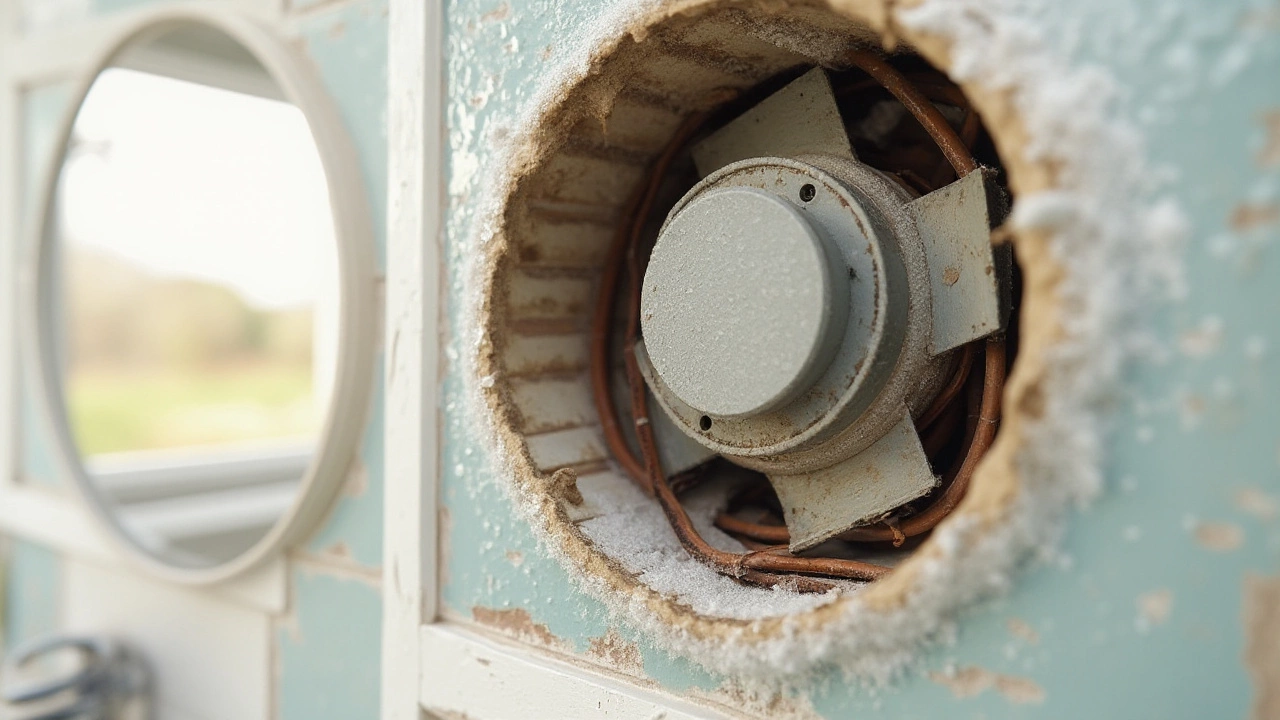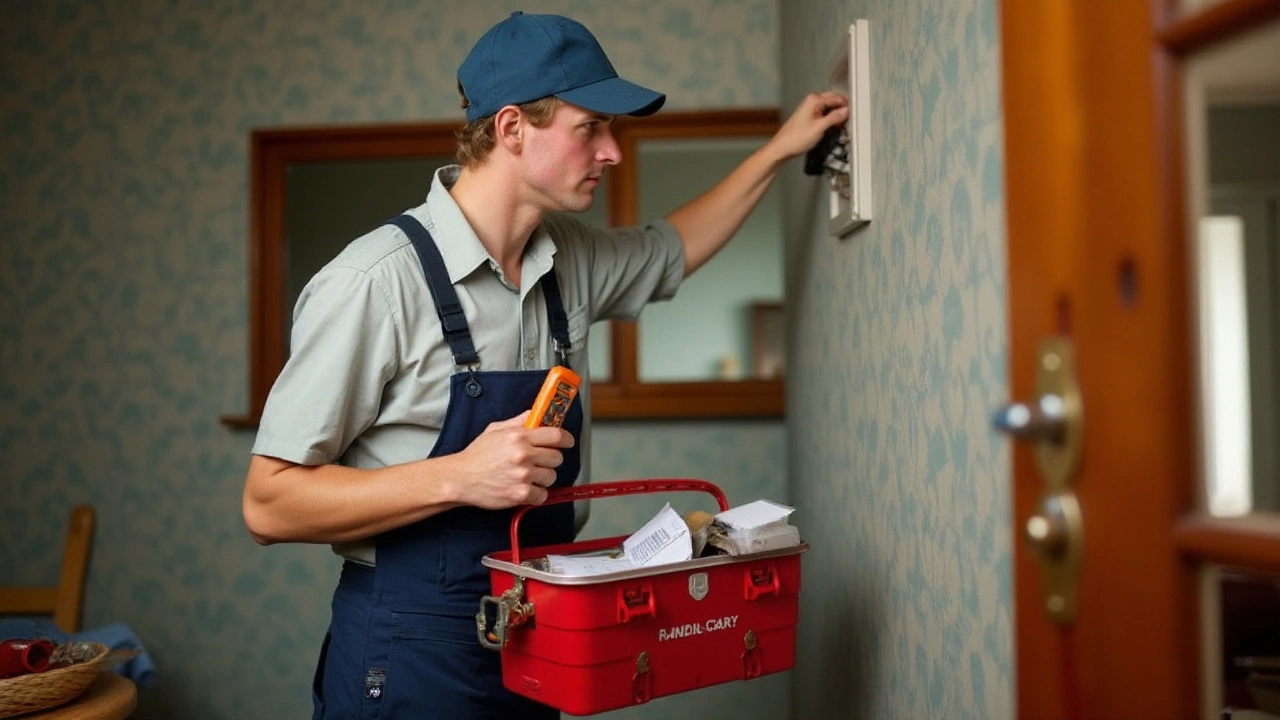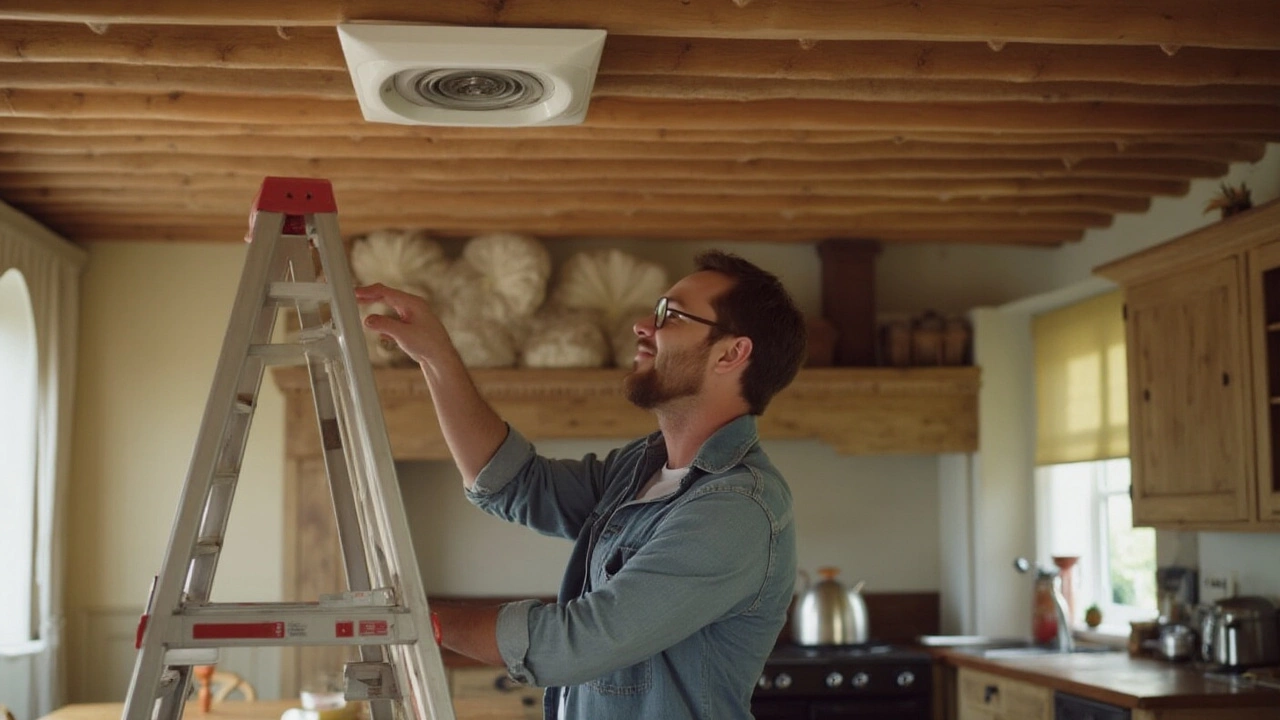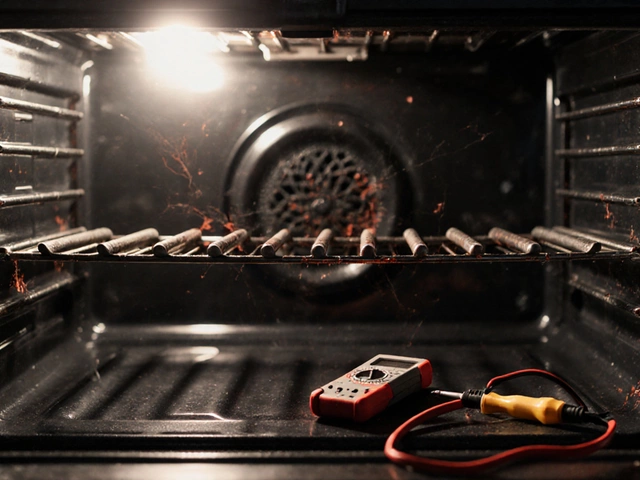Extractor fans are the unsung heroes of our kitchens and bathrooms, tirelessly working to ventilate and remove unwanted odors and moisture. But what happens when these essential appliances cease to perform their duties? A malfunctioning fan can quickly lead to a less pleasant environment, as humidity and smells linger longer than they should.
If your extractor fan has suddenly stopped doing its job, fear not. Whether it's a kitchen or bathroom unit, some straightforward actions can help pin down the issue and potentially fix it yourself. Knowledge about the potential problems and the right steps for troubleshooting can save you time and stress. And with a bit of guidance, you might just be able to get your fan back on track without calling in the professionals.
- Identifying the Problem
- Power Supply and Connections
- Cleaning and Maintenance
- Professional Repair or Replacement
Identifying the Problem
When your extractor fan decides to take a break, the first step is to precisely identify the problem. This isn't just a matter of flipping a switch; it requires a bit of detective work to pinpoint the issue accurately. Unlike other home appliances, these fans provide minimal upfront feedback when something goes wrong. Therefore, you need to be diligent in your approach. Start by considering the symptoms. Is the fan not turning on at all, or is it running but not as effectively? If the latter, perhaps the blades are not rotating at the usual speed, or a strange noise has suddenly appeared, like a ghostly groaning from the wall.
Your investigative work begins with a close inspection. Make sure the fan is properly connected to the electrical supply. Often, a loose wire can be the simple culprit behind an inoperative fan. This step might seem obvious, but it's often overlooked in a flurry of panic when appliances refuse to cooperate. Another aspect worth checking is the wall switch or any circuit breakers that control the power to the fan. Ensure these are functioning as they should. You might want to test the outlet if your setup allows it, plugging in something else to verify power is flowing as expected.
Understanding what led to the fan's failure is also crucial. Has there been a power surge recently? These can affect your fan's electrical components. If the unit appears dead, this might point towards an issue with the fan's internal fuse or motor. When dealing with potentially more complex problems, consulting an online forum or community can reveal if others have faced similar issues. A respected source like the "Home Improvement Stack Exchange" might offer valuable insights, as users share experiences with specific models and problems. As the community member once highlighted, "The average life expectancy of an extractor fan is often underestimated, and symptoms of wear often imitate more serious issues."
In addition to the above, consider the environment where the fan operates. Bathrooms and kitchens inherently contain higher levels of moisture and grease, respectively, which can significantly impact the performance of your fan. So, any debris or buildup in the ductwork or around the fan itself should be inspected and cleared if visible. Remember, safety first: before you open any part of the fan for inspection, disconnect the electricity to the fan unit to prevent electric shocks.
In situations where a simple visual inspection fails to reveal the cause of the malfunction, taking a methodical approach to eliminating each possibility can prevent unnecessary repairs. A multimeter can be an invaluable tool in this endeavor, allowing you to test the continuity and strength of electrical connections leading to the fan. By diligently following these steps, you can often fix simple connection issues yourself, or, at the very least, gather enough information to assist a professional technician in diagnosing the problem efficiently.

Power Supply and Connections
The road to diagnosing any electrical problem often begins by examining the power supply. If your extractor fan suddenly goes silent, the issue may be as simple as a disconnected or faulty power supply. Before you start disassembling parts, it's always wise to double-check if the circuit breaker has tripped. Often, a surge can cause this, and looking over the breaker panel could immediately address the problem. But if flipping the switch doesn't bring power back to your fan, it's time to delve a bit deeper.
Another essential aspect to investigate is the wiring connections. Over time, wires may loosen due to vibrations or poor installation. Carefully inspect the connections within the junction box. Ensure all wires are secure and show no visible signs of wear or damage like fraying. Loose connections can lead to intermittent power issues, rendering your fan unreliable. You might be surprised to find that a simple tightening or replacing of wires can restore normal operation. Make sure you turn off the power at the breaker before you start any inspection to avoid the risk of electric shocks.
Sometimes, the switch controlling the fan itself may be at fault. A defective switch or faulty wiring leading to the fan switch could be the culprit. It's worth noting that a multimeter is an excellent tool here—this device can help you verify whether the switch is in working order. If the readings are abnormal, it might be time to replace the switch. According to the Electrical Safety Foundation International, faulty wiring and switches are among the leading causes of electrical failures in home appliances, so don't overlook this step. Remember, safety first! If unsure, consult a professional electrician.
Of course, there's always the chance that the issue isn't with the power supply at all, but rather lies within the fan motor itself. After verifying power to the unit is stable and wires are in good condition, a non-responsive fan might need a closer examination of its internal components. In such cases, it may be more cost-effective to invest in a new fan altogether rather than attempting a risky motor repair. Always weigh the pros and cons of repair versus replacement—both from a financial and efficiency standpoint.
If your appliances are sending mixed signals, understanding their language might require some technical insight. Identifying whether power supply issues or internal components are to blame can provide clarity, as stated in 'The Homeowner's Guide to Electrical Maintenance.'By keeping an eye on each element of the power and connections circuit, your kitchen ventilation and bathroom fan units can continue to serve their purpose. Investing time in proper maintenance and knowledgeable troubleshooting techniques will undoubtedly extend the lifespan of your beloved extractor fan.

Cleaning and Maintenance
Keeping your extractor fan clean and well-maintained is crucial for ensuring it operates efficiently. Over time, dust, grease, and grime accumulate on the fan blades and grills, hampering their ability to circulate air effectively. Regular cleaning is essential not only for functionality but also for safety, as a clogged fan can become a fire hazard in both kitchens and bathrooms. For those unfamiliar, begin by ensuring the fan is switched off and safely disconnected from power to avoid any accidents during cleaning.
Begin by removing the outer grill or cover. Most modern fans have clips or screws holding these components in place, making them relatively straightforward to remove. Once the cover is off, soak it in warm soapy water to loosen any stubborn deposits. While it's soaking, focus on the fan blades themselves, which can usually be wiped down with a damp cloth or a gentle detergent. Access to the blades will vary depending on the model, so consult your user manual if needed.
For more stubborn dirt, a mild vinegar solution can do wonders—mix equal parts vinegar and water and use a cloth to clean the affected areas. Allow the blades and cover to dry completely before reassembling them to avoid any moisture-related issues. Speaking of regularity, experts suggest a seasonal cleaning schedule to ensure optimal performance all year round.
According to Jane McDevitt, a home appliance specialist, "Neglecting regular cleaning can not only shorten the lifespan of your fan but also compromise its ability to maintain air quality."
In addition to cleaning, maintenance activities are equally important. This includes checking for any loose parts or unusual noises that may indicate wear or damage. Lubricate any moving parts like the fan motor and shaft with the appropriate oil if required. Look out for any signs of rust or corrosion, especially in high-humidity environments like bathrooms. Keeping the surrounding area of the extractor, including the duct, clear of obstructions is equally crucial for optimal airflow.
Replacing filters is another part of routine maintenance that shouldn't be overlooked. Many so-called extractor fans are actually filter fans; when the filter becomes clogged, it reduces efficiency. Check the manufacturer's recommendations for how often filters should be replaced, typically between six months to a year depending on usage. Finally, document any maintenance actions in a log or checklist to keep track of when tasks were last completed, which becomes especially handy if you later encounter issues that necessitate professional intervention.
These steps, though they may seem simple, play an invaluable role in extending the life of your extractor fan and ensuring it continues to work effectively. By making cleaning and maintenance a regular habit, you not only save on potential repairs in the future but also maintain the air quality of your living spaces, protecting both the home and its occupants from the discomfort of lingering odors and excessive humidity.

Professional Repair or Replacement
When your extractor fan gives up on its duties and basic troubleshooting doesn’t seem to provide relief, the question of whether to repair or replace it becomes inevitable. Often this decision hinges on factors such as the fan's age, the cost of potential repairs, and the hassle factors involved. Older fans might be less efficient and more problematic, in which case replacement may be the more sensible and economical option. On the other hand, newer models might promise longevity with just a bit of professional tinkering. Now, where do you draw the line?
If you opt for a professional repair, engaging a certified electrician or a trusted repair service is advisable. These professionals possess the expertise and tools necessary to diagnose the problem accurately. They assess things you may overlook, from faulty wiring to motor issues, and they ensure repairs adhere to the latest safety standards. A crucial step is ensuring that the repair costs do not exceed more than half of what a brand new unit would cost. As the adage goes, "Don't throw good money after bad." In cases where the fan has simply worn out, a complete replacement might be worth considering for the long haul.
Replacement solutions often come with significant benefits, including energy efficiency improvements and enhanced features like noise reduction or speed variability. The modern kitchen ventilation systems today are designed to be much quieter and often tailored to specific needs, which is appealing if you've grown accustomed to an underperforming or overly noisy fan. Selecting a fan that bears the Energy Star label can lead to energy savings over time—a strategic move both environmentally and economically.
Bathroom fan upgrades can bring similar perks, such as added humidity sensors that help maintain optimal moisture levels, thereby extending the life of paint and tiles. It’s crucial to match the fan's capacity to the room's size for maximum efficiency. On this path, consulting a professional for advice on model selection ensures the best fit for your needs, as well as proper installation to avoid recurring issues.
“Investing in an efficient extractor fan is like giving your home the breath of fresh air it deserves,” says Jenna Maclin, a renowned home improvement blogger. “It may seem minor, but effective ventilation makes a tremendous impact on comfort and air quality.”
Considering long-term benefits and costs, the choice between repair and replacement isn't always straightforward, yet knowing your options arms you with the insights to make the right call. A professional can lend that hand to guide you through the process, balancing what's feasible against what truly serves your home's ventilation needs.




